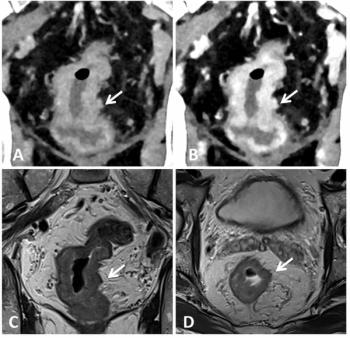
MRI Shows Women’s and Men’s Hearts Age Differently
Using MRI to image the left ventricle shows more precise measurements of the heart.
The left ventricle of the heart ages differently between men and women, according to a new study published in
Researchers from Maryland, Washington, California, North Carolina, Massachusetts, and New York sought to evaluate age-related left ventricular (LV) remodeling among both men and women who did not have clinical cardiovascular disease at the start of the study.
A total of 2,935 subjects who did not have clinical cardiovascular disease, aged 54 to 94, enrolled in the study. Slightly more than half (53%) were women. All subjects underwent baseline MRI and median time between baseline and follow-up cardiac MR imaging was 9.4 years.
Results showed that the LV mass increased in men and decreased slightly in women during the study (8.0 and 21.6 g per decade, respectively).
“The change in LV mass was positively associated with systolic blood pressure and body mass index and negatively associated with treated hypertension and high-density lipoprotein cholesterol level,” the authors wrote. The longitudinal LV mass increase was in contrast to a cross-sectional pattern of LV mass decrease.
“The shape of the heart changes over time in both men and women, but the patterns of change are different,” lead author John Eng, MD, from Johns Hopkins University School of Medicine said in a release. “Men’s hearts tend to get heavier and the amount of blood they hold is less, while women’s hearts don’t get heavier.”[[{"type":"media","view_mode":"media_crop","fid":"43059","attributes":{"alt":"John Eng, MD","class":"media-image media-image-right","id":"media_crop_7074979972057","media_crop_h":"0","media_crop_image_style":"-1","media_crop_instance":"4688","media_crop_rotate":"0","media_crop_scale_h":"0","media_crop_scale_w":"0","media_crop_w":"0","media_crop_x":"0","media_crop_y":"0","style":"float: right;","title":"John Eng, MD","typeof":"foaf:Image"}}]]
Eng pointed out that this study shows advantages offered by MRI to image the LV over other examinations. “Most heart imaging is done by echocardiography, but the measurements require a few assumptions and may not be as precise as you would like,” Eng said. “MRI gives you clearer pictures of the heart, allowing more precise computerized measurements.”
Newsletter
Stay at the forefront of radiology with the Diagnostic Imaging newsletter, delivering the latest news, clinical insights, and imaging advancements for today’s radiologists.



























